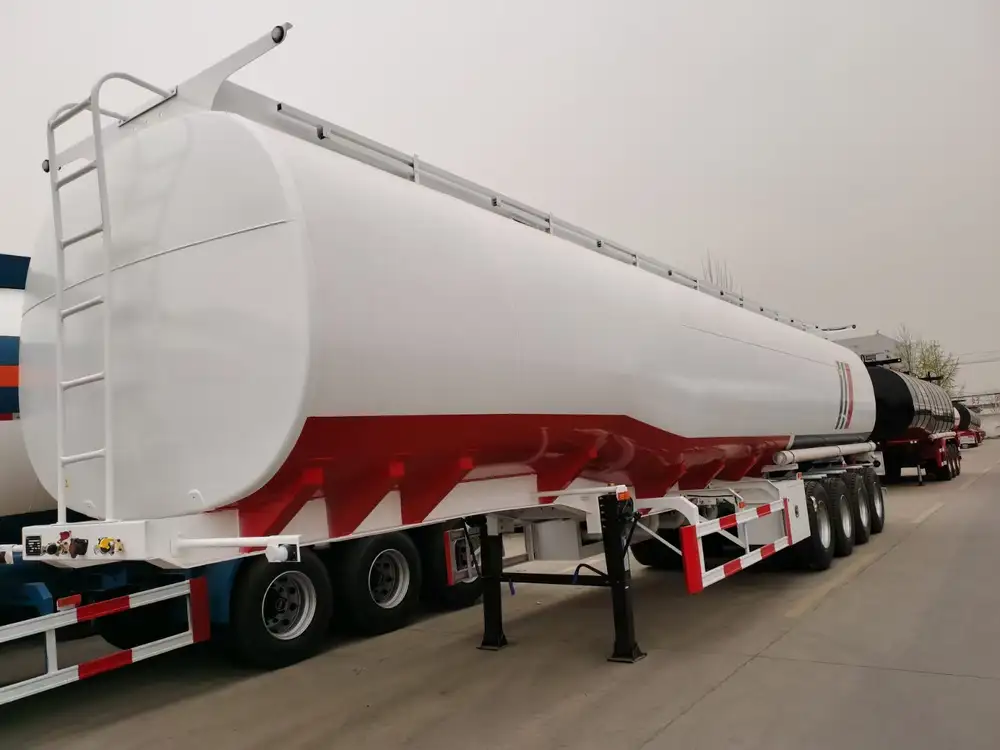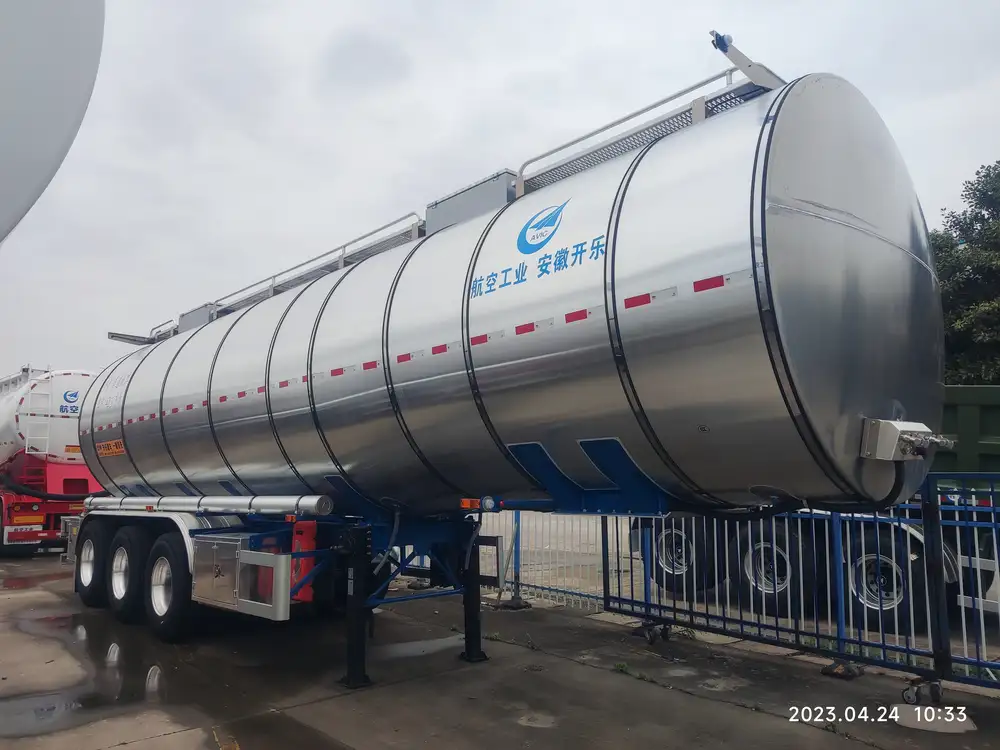Introduction to Dump Trailer Pumps
When it comes to enhancing transportation efficiency, dump trailers are indispensable in various industries, including construction, agriculture, and logistics. Central to the functionality of these trailers is the hydraulic pump, which effectively controls the dumping mechanism. However, a common query among operators is how to utilize the A and B ports on dump trailer pumps optimally. This article will explore the functionalities of these ports, illustrated with detailed comparisons, instructions, and insights to maximize your trailer’s performance.
The Basics of Dump Trailer Hydraulic Systems
What is a Hydraulic System?
A hydraulic system operates on the principle of fluid mechanics, utilizing pressurized hydraulic fluid to create force and movement. In dump trailers, hydraulic systems allow for lifting and tilting the bed to facilitate unloading materials efficiently. Key components include:
- Hydraulic Pump: Converts mechanical energy into hydraulic energy.
- Hydraulic Cylinder: Converts hydraulic energy back into mechanical energy to raise or lower the trailer’s bed.
- Control Valve: Directs the fluid flow to different system components.
- Hydraulic Fluid: Serves as the medium for transferring force.
| Component | Function |
|---|---|
| Hydraulic Pump | Generates system pressure |
| Hydraulic Cylinder | Performs the lifting motion |
| Control Valve | Manages fluid direction and flow rates |
| Hydraulic Fluid | Transfers energy efficiently |

When to Use A and B Ports
Hydraulic pumps on dump trailers typically feature two ports: A and B. Each port has specific roles in the operation of the hydraulic system:
A Port: Often designated for the supply of hydraulic fluid to the hydraulic cylinder. This port is responsible for providing the necessary fluid to lift the trailer bed.
B Port: Primarily used for the return of hydraulic fluid back to the reservoir after it has completed a cycle. This port ensures that the hydraulic cylinder can retract and reset after lifting.
Understanding when and how to use each port will enhance the efficiency and safety of your dumping operations.
Deep Dive into the Functionality of A and B Ports
Detailed Operation of A Port
Fluid Supply: The A port delivers hydraulic fluid directly to the cylinder, which enables the lifting mechanism.
Pressure Regulation: When the control valve is activated, pressure builds up within the cylinder through the A port, lifting the trailer bed against the weight of the payload.
Cycle Duration: The time it takes for the bed to rise correlates directly to the volume and pressure of the fluid supplied via the A port. Understanding the optimal pressure settings is crucial for minimizing cycle time while maximizing load capacity.
Common Issues:
- Clogs in A Port: These can lead to slow lifting or complete failure to raise the bed.
- Pressure Loss: Insufficient pressure from the pump can impede operation. Regular maintenance checks are essential.

Detailed Operation of B Port
Fluid Return: The B port allows hydraulic fluid to flow back to the reservoir once the load has been raised and the operator is ready to lower it.
Gravity Assistance: In some setups, gravity plays a role in returning fluid through the B port, assisting in lowering the bed more quickly.
Cycle Efficiency: A well-functioning B port contributes to faster cycle times, as it helps clear fluid quickly, allowing for the next lift to commence swiftly.
Common Issues:
- Leakage: Any leakage around the B port can result in fluid loss, necessitating immediate repair to prevent operational inefficiencies.
- Air Trapping: If not properly vented, air can become entrapped in the system, causing erratic cylinder movement.
Comparison of A and B Ports
| Feature | A Port | B Port |
|---|---|---|
| Main Function | Supply hydraulic fluid | Return hydraulic fluid |
| Pressure Role | Generates pressure for lifting | Releases pressure for lowering |
| Common Issues | Clogs, pressure drops | Leakage, air traps |
| Maintenance Focus | Regular inspection and cleaning | Seal checks, fluid levels |
Best Practices for Utilizing A and B Ports
Regular Maintenance:
- Inspect the A and B ports biweekly for any signs of damage or wear.
- Clean these ports to prevent clogging, ensuring smooth fluid flow.
Monitoring Pressure Levels:
- Use a gauge to regularly assess the pressure generated through the A port.
- Adjust as necessary to maintain optimal performance, especially under different load conditions.
Training Operators:
- Train personnel on the correct use of these ports. Mismanagement can lead to catastrophic failure or inefficient operation.
- Develop standard operating procedures (SOPs) for using the hydraulic system safely.
Fluid Quality Control:
- Ensure the hydraulic fluid used is of high quality and change it regularly to prevent system corrosion and premature failure of components.

Troubleshooting Common Issues
Inadequate Lifting Power
- Symptoms: The trailer fails to lift, or the lifting is sluggish.
- Potential Causes:
- Low fluid levels in the tank.
- Blockages in the A port due to debris.
- Insufficient pressure from the pump.
Solution: Check the fluid level, inspect the A port for obstructions, and verify the pump’s output pressure.
Unstable Lowering Mechanism
- Symptoms: The trailer bed drops too quickly or jerkily.
- Potential Causes:
- Problems with the B port, such as leaks, or failing return lines.
- Air trapped in the hydraulic system.
Solution: Examine the return lines and B port seals for leaks and bleed the system to remove any trapped air.

Conclusion: Enhancing Dump Trailer Efficiency
Optimizing the use of A and B ports on dump trailer pumps is vital for efficient operation, reduced wear, and minimal downtime. By adhering to robust maintenance practices, monitoring pressure settings, and ensuring proper operator training, you can significantly enhance the reliability and performance of your dump trailers. With well-maintained hydraulic systems, your investment in dump trailers will yield greater returns through reliable and seamless operations.
Call to Action
For operators seeking to improve their dump trailer efficiency or address specific hydraulic concerns, our expert team is here to assist. Don’t hesitate to reach out for tailored guidance and solutions that will elevate your operational productivity to new heights. Take control of your hydraulic efficiency today!



